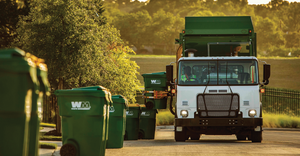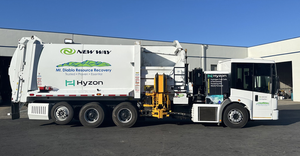Fresno Landfill Has Value as a Landmark
October 1, 2001
Alice P. Jacobsohn
In late August, a debate ensued over whether to include a closed landfill, the Fresno Municipal Sanitary Landfill, Fresno County, Calif., on the list of National Historic Landmarks. The debate centered around environmental concerns because the landfill also is a Superfund site.
Debaters of whether or not to add the Fresno Landfill to the Historic list included the Sierra Club, San Francisco, which argued that California would not want to be known for a failed 20th century landfill technology. However, the landfill's operator pointed out that the site is a unique contribution as the oldest sanitary landfill in the United States, but spent most of his argument discussing that the site was cleaned up to prepare for a new recreational area. Fresno's Mayor Alan Autry defended his town by describing the 115-acre sports and recreation complex planned for the site. As a result of the controversy, the listing was temporarily rescinded. The debate, however, missed the point of National Historic Landmark status and belittled the role that the waste industry has played and continues to play in U.S. history.
Why not a landfill? Determining landmarks is about America's history, and what is a better indicator of U.S. history than our garbage disposal system? What we have disposed of and how is perhaps the greatest measure of our economy and our interests over the generations. History is not about modern-day environmental concerns, but about recognizing where we have been and where we are going.
The Fresno landfill is an example of the U.S. garbage evolution with its unique disposal system. That the technology eventually was replaced with better, more environmentally sound systems, well, that's history. Far worse has been recognized in U.S. history, with sites where native populations were massacred and where young men were slaughtered in the heat of battle. These places were recognized for their contribution of building a nation — no matter how good, bad or ugly.
An early 20th century sanitary landfill system is important to U.S. history. These systems were pioneered to enhance American life by eliminating rodent, disease and debris problems. They were designed through American ingenuity and built under the American work ethic. The designers, builders and operators are a part of history, and their contributions should be recognized.
According to a U.S. Department of Interior report, the Fresno Sanitary Landfill opened in 1935 and closed in 1987, and is the oldest “true” sanitary landfill in the United States. The landfill is also the first and oldest compartmentalized municipal landfill (trench method) in western America, having operated continuously for more than 50 years. Also, Fresno's landfill was the first to use compaction. Refuse and dirt were layered in trenches then compacted and covered daily. The technique later was adopted by modern sanitary landfills builders. Thus, the Fresno landfill represents a “true” sanitary landfill, not simply a modification of older land-dumping methods.
As environmentalists, the waste industry should embrace the historical value of early sanitary landfills for two reasons. First, these landfills were a step forward in protecting the environment. Even though such landfills eventually failed, U.S. residents began to recognize the value of living in a cleaner environment. Throwing garbage onto the street or in a pile in an open field was no longer acceptable. Second, landmarks often are identified precisely because of human failure. Remembering what happened to prevent the reoccurrence of mistakes is extremely important. Hopefully, in the future, we will no longer have Superfund sites because we have paid attention to our history.
Additionally, to allow sites to be named a National Historic Landmark based on the current generation's values is to rewrite history. Sites should be identified in the context of the time of their historical significance. For the Fresno landfill, we should look at 1935 not 2001. In 1935, there was not a Superfund law or other environmental protection regulation. In fact, Superfund, also known as the Comprehensive Environmental Response, Compensation and Liability Act, was not enacted until 1980, which is just seven years before the Fresno landfill was closed.
Alice Jacobsohn is EIA's director of public affairs and industry research. Phone (202) 244-4700. E-mail: [email protected].
You May Also Like


